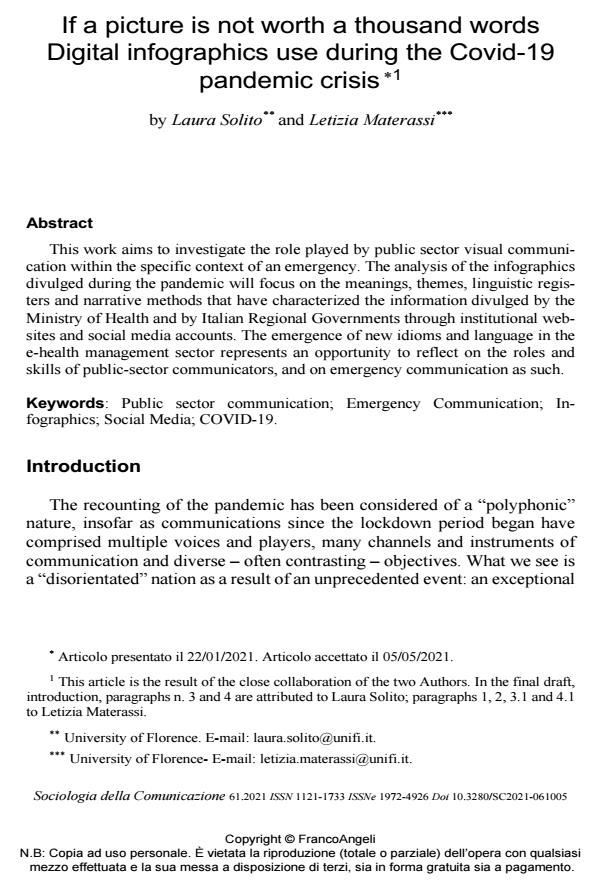If a picture is not worth a thousand words. Digital infographics use during the Covid-19 pandemic crisis
Journal title SOCIOLOGIA DELLA COMUNICAZIONE
Author/s Laura Solito, Letizia Materassi
Publishing Year 2021 Issue 2021/61
Language English Pages 19 P. 52-70 File size 535 KB
DOI 10.3280/SC2021-061005
DOI is like a bar code for intellectual property: to have more infomation
click here
Below, you can see the article first page
If you want to buy this article in PDF format, you can do it, following the instructions to buy download credits

FrancoAngeli is member of Publishers International Linking Association, Inc (PILA), a not-for-profit association which run the CrossRef service enabling links to and from online scholarly content.
This work aims to investigate the role played by public sector visual communi-cation within the specific context of an emergency. The analysis of the in-fographics divulged during the pandemic will focus on the meanings, themes, lin-guistic registers and narrative methods that have characterized the infor-mation divulged by the Ministry of Health and by Italian Regional Governments through institutional websites and social media accounts. The emergence of new idioms and language in the e-health management sector represents an opportunity to reflect on the roles and skills of public-sector communicators, and on emergen-cy communication as such.
Keywords: Public sector communication; Emergency Communication; In-fographics; Social Media; COVID-19.
- Towards a conversational public administration? Giulia Banfi, Marco Luca Pedroni, in RDBCI: Revista Digital de Biblioteconomia e Ciência da Informação /2025 pp.e026005
DOI: 10.20396/rdbci.v24i00.8680284
Laura Solito, Letizia Materassi, If a picture is not worth a thousand words. Digital infographics use during the Covid-19 pandemic crisis in "SOCIOLOGIA DELLA COMUNICAZIONE " 61/2021, pp 52-70, DOI: 10.3280/SC2021-061005